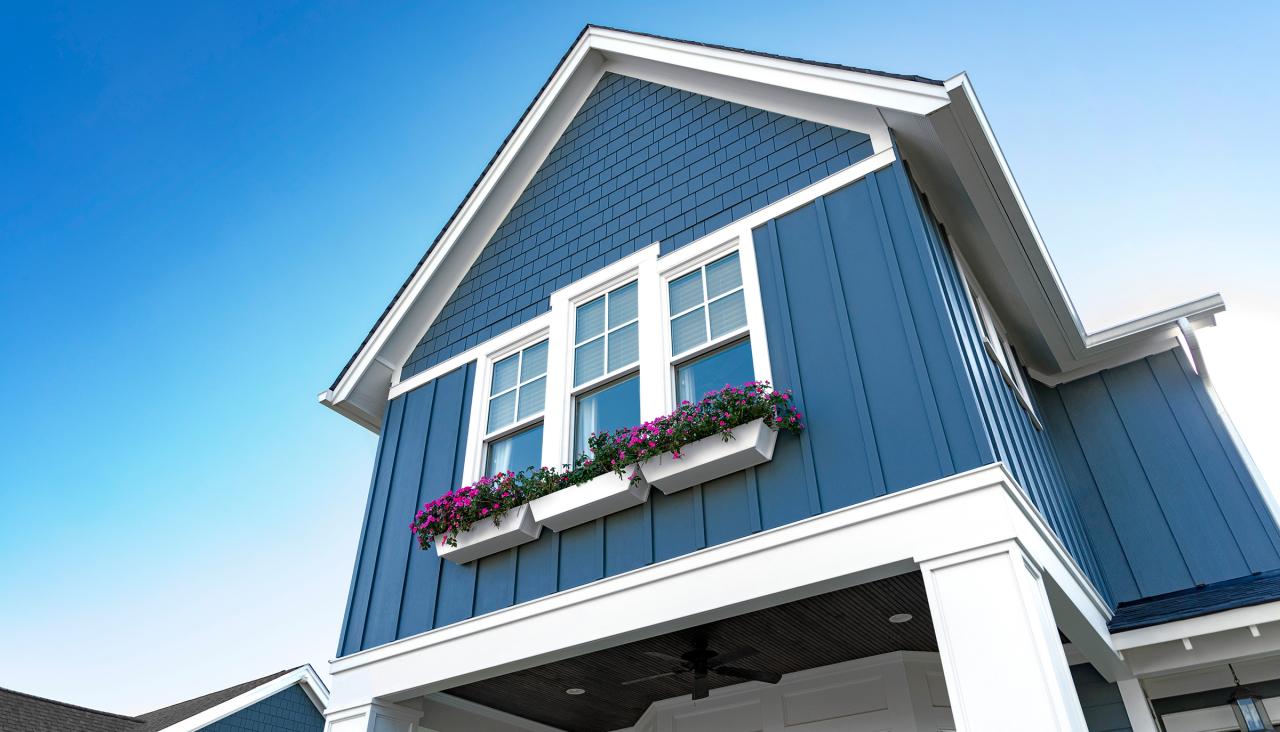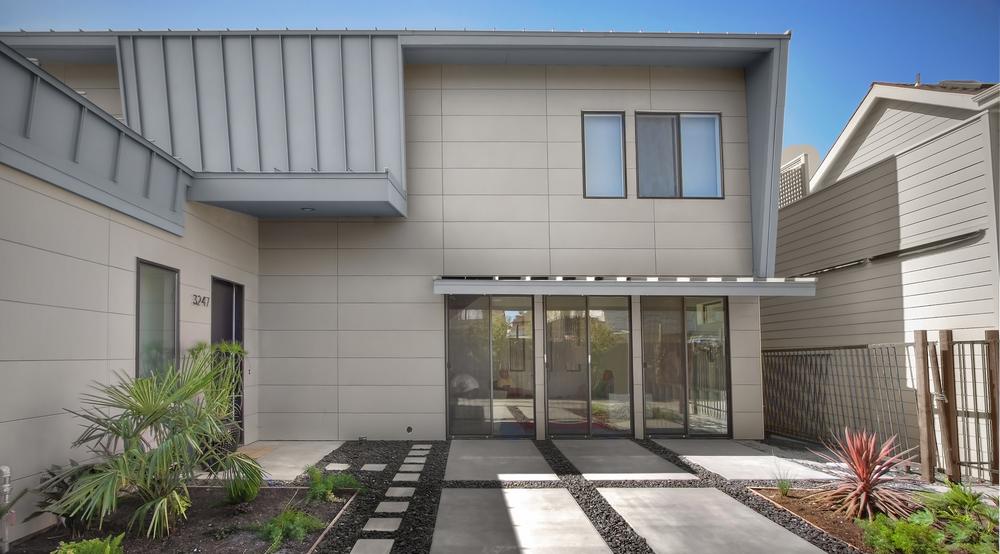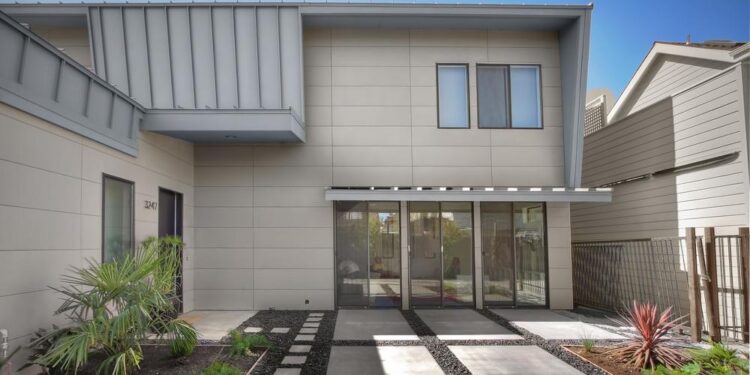Embarking on the journey of Installing Fire-Resistant Siding for Safer Homes, we delve into a world where protection meets innovation. This guide promises to enlighten and empower homeowners seeking to fortify their abodes against the threat of fire hazards.
Exploring the various facets of fire-resistant siding, we uncover the key elements that contribute to a secure and resilient home environment.
Researching Fire-Resistant Siding Options
When it comes to choosing fire-resistant siding for your home, it is essential to research the various options available in the market to make an informed decision. Fire-resistant siding can provide an added layer of protection for your home against potential fire hazards, offering peace of mind for you and your family.
Types of Fire-Resistant Siding Materials
- Fiber Cement Siding: Made from a mix of wood pulp, cement, clay, and sand, fiber cement siding is known for its durability and fire resistance. It is non-combustible and can withstand high temperatures, making it a popular choice for fire-prone areas.
- Metal Siding: Metal siding, such as steel or aluminum, is naturally fire-resistant and can help prevent the spread of flames in case of a fire. It is also durable and low-maintenance, offering long-lasting protection for your home.
- Fire-Resistant Vinyl Siding: Some vinyl siding products are designed to be fire-resistant, offering a cost-effective option for homeowners looking to enhance their home's safety. These products are specially formulated to resist flames and heat, reducing the risk of fire damage.
Benefits of Using Fire-Resistant Siding
- Enhanced Safety: Fire-resistant siding can help protect your home from fire damage and reduce the risk of flames spreading quickly.
- Durability: Fire-resistant siding materials are often durable and long-lasting, providing added protection for your home against various elements.
- Potential Insurance Savings: Some insurance companies offer discounts for homes with fire-resistant siding, as it can lower the risk of significant fire damage.
Key Factors to Consider When Selecting Fire-Resistant Siding
- Fire-Retardant Rating: Check the fire-retardant rating of the siding material to ensure it meets the necessary safety standards for your area.
- Aesthetics: Consider the visual appeal of the siding and choose a material that complements the overall look of your home.
- Maintenance Requirements: Evaluate the maintenance needs of the siding material to ensure it aligns with your lifestyle and budget.
- Certifications: Look for certifications from reputable organizations that confirm the fire-resistant properties of the siding material.
Understanding the Installation Process

When it comes to installing fire-resistant siding on a home, it is crucial to follow a step-by-step process to ensure a secure and proper installation. This not only enhances the safety of the home but also increases its durability and protection against fire hazards.
Step-by-Step Installation Process
- Prepare the Surface: Before installing fire-resistant siding, make sure the surface is clean, dry, and free from any debris or obstacles.
- Measure and Cut: Take accurate measurements of the area where the siding will be installed and cut the siding panels accordingly to fit the space.
- Install Corner and J-Channel Pieces: Begin by installing corner and J-channel pieces to provide a clean and finished look to the edges of the siding.
- Attach the Siding Panels: Securely attach the siding panels to the surface using appropriate fasteners, ensuring they are properly aligned and leveled.
- Overlap Joints: Make sure to overlap joints between siding panels to prevent water infiltration and enhance the overall fire resistance of the siding.
- Finish with Trim Pieces: Complete the installation by adding trim pieces to cover any exposed edges and give a polished look to the siding.
Tools and Materials Required
- Fire-Resistant Siding Panels
- Corner and J-Channel Pieces
- Fasteners (Nails or Screws)
- Measuring Tape
- Saw or Cutting Tool
- Level
- Caulk and Sealant
- Trim Pieces
Tips for Proper Installation
- Follow Manufacturer's Instructions: Always refer to the manufacturer's guidelines for installing fire-resistant siding to ensure a correct installation.
- Use Proper Fasteners: Choose the right type of fasteners recommended for the siding material to securely attach the panels.
- Check for Level and Alignment: Regularly check the level and alignment of the siding panels during installation to avoid any gaps or uneven surfaces.
- Seal Joints and Gaps: Seal all joints and gaps with caulking or sealant to enhance the fire resistance and weatherproofing of the siding.
- Regular Maintenance: Perform regular maintenance checks to ensure the siding remains in good condition and replace any damaged panels promptly.
Maintaining Fire-Resistant Siding
Regular maintenance of fire-resistant siding is crucial to ensure its effectiveness in protecting homes from fire hazards. By following a proper maintenance schedule and inspecting for any damage or wear, homeowners can prolong the lifespan of their fire-resistant siding and maintain the safety of their property.
Importance of Regular Maintenance
Regular maintenance of fire-resistant siding helps in preserving its fire-retardant properties and structural integrity. This maintenance routine not only enhances the longevity of the siding but also ensures that it functions optimally in the event of a fire.
Maintenance Schedule for Cleaning and Upkeep
- Regularly clean the siding with a mild detergent and water solution to remove dirt, dust, and debris that can accumulate over time.
- Inspect the siding for any signs of mold or mildew growth and promptly address it to prevent further damage.
- Trim vegetation and trees near the siding to reduce the risk of fire spreading to the home.
- Check for any gaps or cracks in the siding and seal them with fire-resistant caulk to maintain the integrity of the fire barrier.
Inspecting for Damage or Wear
- Visually inspect the siding for any signs of charring, warping, or discoloration, which may indicate exposure to high heat and compromise its fire resistance.
- Check for any loose or missing panels that need to be reattached or replaced to ensure seamless coverage and protection.
- Examine the edges and corners of the siding for any gaps or separation that could allow flames to penetrate during a fire.
Ensuring Safety Measures
When it comes to installing fire-resistant siding, ensuring safety measures is crucial to protect your home and loved ones. Here are some important tips to keep in mind:
Safety Precautions During Installation
- Wear appropriate protective gear such as gloves, safety goggles, and masks to prevent any injuries during the installation process.
- Make sure to follow manufacturer instructions carefully to avoid any mishaps or accidents.
- Keep a fire extinguisher nearby in case of emergencies and know how to use it effectively.
- Avoid smoking or any open flames near the installation area to reduce the risk of fire.
- Work with a partner or professional if needed, especially when handling heavy materials or working at heights.
Fire Safety Standards and Regulations
- Check local building codes and regulations to ensure compliance with fire safety standards for fire-resistant siding installation.
- Consult with experts or professionals to understand specific requirements for fire-resistant materials in your area.
- Ensure that the chosen fire-resistant siding meets industry standards and certifications for maximum protection.
Enhancing Home Safety
- Consider installing smoke detectors and fire alarms throughout your home for early detection of any fire hazards.
- Keep flammable materials away from the exterior of your home to reduce the risk of fire spreading.
- Create a fire escape plan and practice it with your family to ensure everyone knows what to do in case of a fire.
- Regularly inspect and maintain your fire-resistant siding to ensure it remains effective in protecting your home.
Cost Considerations and Budgeting

When it comes to investing in fire-resistant siding for your home, understanding the costs involved and budgeting accordingly is crucial. The typical costs associated with purchasing and installing fire-resistant siding can vary depending on the type of material, the size of your home, and the complexity of the installation process.
Comparing Cost-Effectiveness of Different Options
- Traditional wood siding: While initially cheaper to purchase, wood siding may require more frequent maintenance and is less fire-resistant compared to other options.
- Fiber cement siding: Known for its durability and fire resistance, fiber cement siding can be a cost-effective option in the long run despite a higher initial cost.
- Metal siding: Metal siding is highly fire-resistant and low maintenance, making it a cost-effective choice for homeowners looking for long-lasting protection.
Budgeting Tips for Homeowners
- Get multiple quotes: Reach out to different contractors to compare prices and services offered for purchasing and installing fire-resistant siding.
- Consider long-term savings: While the initial cost of fire-resistant siding may be higher, factor in the potential savings on maintenance and insurance premiums over time.
- Plan for additional expenses: Don't forget to budget for any unforeseen costs that may arise during the installation process, such as repairs or modifications to your home's exterior.
- Explore financing options: Look into financing options or rebates that may be available to help offset the cost of investing in fire-resistant siding for your home.
Final Thoughts
In conclusion, the installation of fire-resistant siding not only enhances the safety of your home but also offers peace of mind and security for you and your loved ones. Make the wise choice today to safeguard your home for a brighter and safer tomorrow.
FAQ Compilation
What are the main benefits of using fire-resistant siding?
Fire-resistant siding provides enhanced protection against fires, improves home safety, and can potentially lower insurance premiums.
What tools and materials are required for installing fire-resistant siding?
Common tools include a saw, hammer, nails, and a level, while materials may include fire-resistant siding panels, trim pieces, and caulk.
How often should fire-resistant siding be inspected for damage?
It is recommended to inspect fire-resistant siding annually for any signs of wear or damage, especially after extreme weather conditions.









